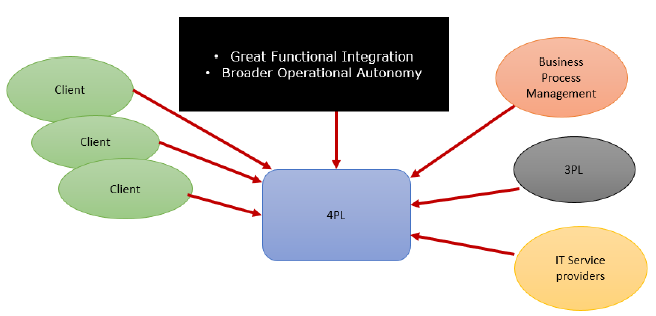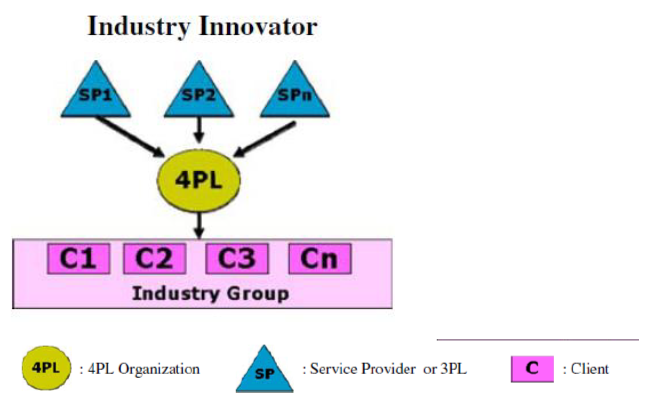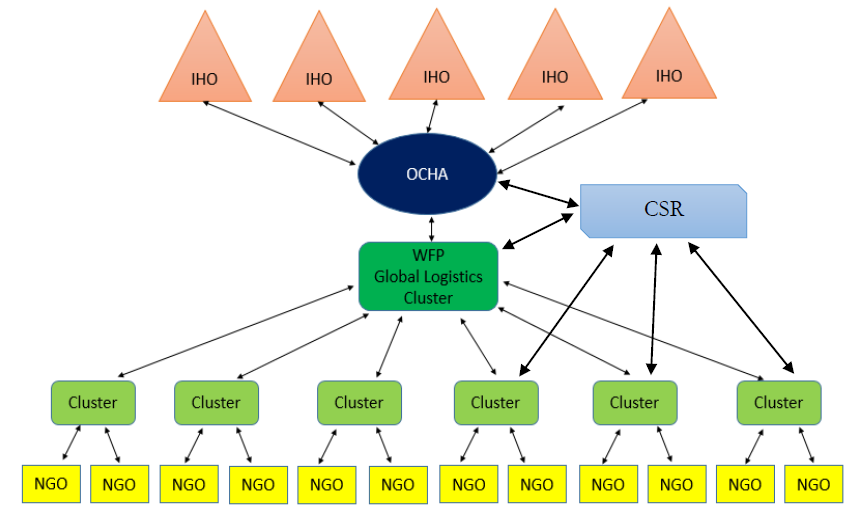ABSTRACT
This thesis will investigate the Communication, Collaboration and Coordination among humanitarian organization with the application of Information and Communication Technology, and commercial paradigms. Aims to involve the relief actors and the commercial companies involved throughout of their Corporate Social Responsibility programs. The methodology is chosen specifically to fit the qualitative nature of the research. The paper presents data collected for the sole purpose of this research and is later on analysed in order to draw theoretical conclusions. At the end, practical implications and suggestions for future research are included.
FRAME OF REFERENCE
The world during the last decades have encountered an increased amount of disasters occurring worldwide. The Global Resource Information Database- GRID-Arendal, in collaboration with the United Nations Environment Programme (UNEP) provides a clear graphical representation of the growth in natural disasters, see (Figure 1). It is important to be noted that disaster numbers have amounted from less than 50 in the 1960s, more than 200 in 1980s to over 400 in last decades.

Figure 2: The Cluster Approach.
Introduced in the 2005, as part of major change in the humanitarian logistics sphere, the Clusters Approach is a game changer to how operations are conducted in a new way. Defined as “Clusters are groups of humanitarian organizations (UN and non-UN) working in the main sectors of humanitarian action, e.g. shelter and health.

Figure 3: Evolution of 4PLs.
4PL has emerged as the ideal solution that allows companies around the globe, from a diverse range of industries, to have a single point of accountability across both supply and demand chains (Win, 2008). Based on the findings of Hingley, Lindgreen, Grant and Kane, (2011), it is visible that 4PLs improve the profitability of their customers by improving the overall effectiveness. Win (2008) and Yao (2013) point out that through integration, optimization and development of the entire supply chain, the 4PLs are delivering value to their customers by resource allocation and integration.

Figure 4: The Industry Innovator model.
The Industry Innovator model, shown in Figure 4, deals in the complicated commercial environment, where the “4PL provider develops and manages a supply chain solution for multiple industry participants. 4PL organization will focus on synchronization and collaboration between the participants in order to provide efficiency through technology, operational strategies and implementations across the supply chain” (Büyüközkan et al., 2008, p. 117).
METHOD
In order to fulfil the purpose of the study it is very important for the right research strategy to be chosen. This chapter describes the structure of the executed research and its different approaches and paradigms. The paper is based on the clear research structure developed by Saunders, Lewis and Thornhill (2012) in the form of research “onion” and presented as a coherent match between the purpose of the study and the research framework, covering the choice of approach and its purpose, followed by the research strategy; time horizon and end up with the core of the “onion” with techniques and procedures for data collection and analysis.
EMPIRICAL FINDINGS
UNICEF
Mr. Rolf Bohlin, as mention earlier, is a retired head of the country Supply Chain departments within UNICEF for nearly 30 years. He has been involved in emergencies in Somalia, Af-ghanistan, South Sudan and East Timor, currently he is part time advisor for UNICEF and other humanitarian organization, as well as a guest lecturer at JIBS, provided overview of the information, communication and collaboration activities taking place in the field of human-itarian logistics.
ANALYSIS

Figure 5: Communication, collaboration and coordination in the Cluster System.
One of them could be Industry Innovator model, from the 4PL literature presented by Büyüközkan at al., (2008), modified specifically for the unique nature of humanitarian logis-tics. It serves as an information hub(Jensen, 2012) for all parties involved and offers only integrated solutions based on the needs and specific activities of each player, while in the same time they get to keep their independence.
Figure 5 shows the proposed model bellow that is the modified version of the Industry Innovator model, where Independently working Humanitarian Organizations (IHO), the Cluster system and NGOs are sharing information through one collective body-OCHA. Private companies, present at the field of the disaster as part of their CSR programs, can assist on every level, depending on where they are needed and what kind of expertise they can contribute with.
CONCLUSION
Humanitarian logistics operate in one of the most unpredictable and volatile environments in nowadays. Depending on the specific disaster and the affected area, there are many un-knowns that have to address, in order to provide aid and reduce the suffering of the affected population. Despite having all the mechanisms, practices and policies aiming to ensure joint efforts and providing unified front, humanitarian organizations are still struggling to work together in the Cluster System.
The most common statement common statements during the interviews conducted with the participants was that the current state of communication and cooperation is better than be-fore and that it is constant work in progress. It would be very ambitious to try and solve all the issues humanitarian originations face and in combination with the unpredictability of what the specific disasters require it is nearly impossible to have a system that is 100 per cent efficient in every case. What could be done, is to develop framework of cooperation to ensure the best possible united response.
This research considers the implementation of information and communication technology techniques as the root of coordination issues and the key to solving problems with collaboration. With the improvement of information flow, humanitarian entities would be able to have better and timely overall picture to what is happening, what needs to be done, and what are the capabilities and competences of the organizations present. From there on they can move to having more efficient collaboration and overall coordination in their actions.
Source: Jankoping University
Authors: Krasimir Ivanov
